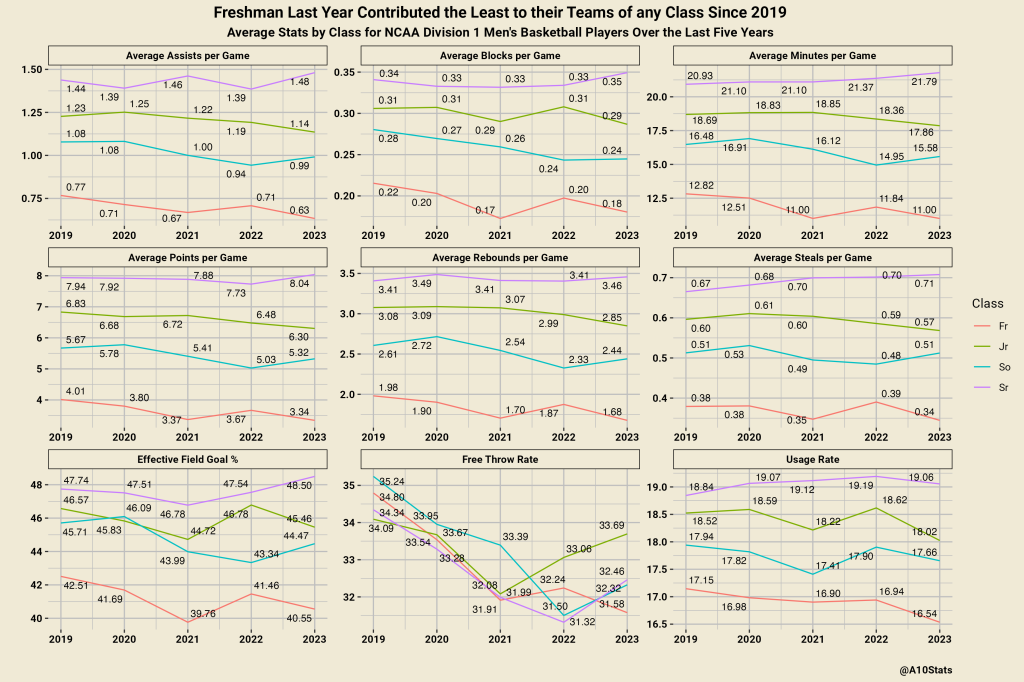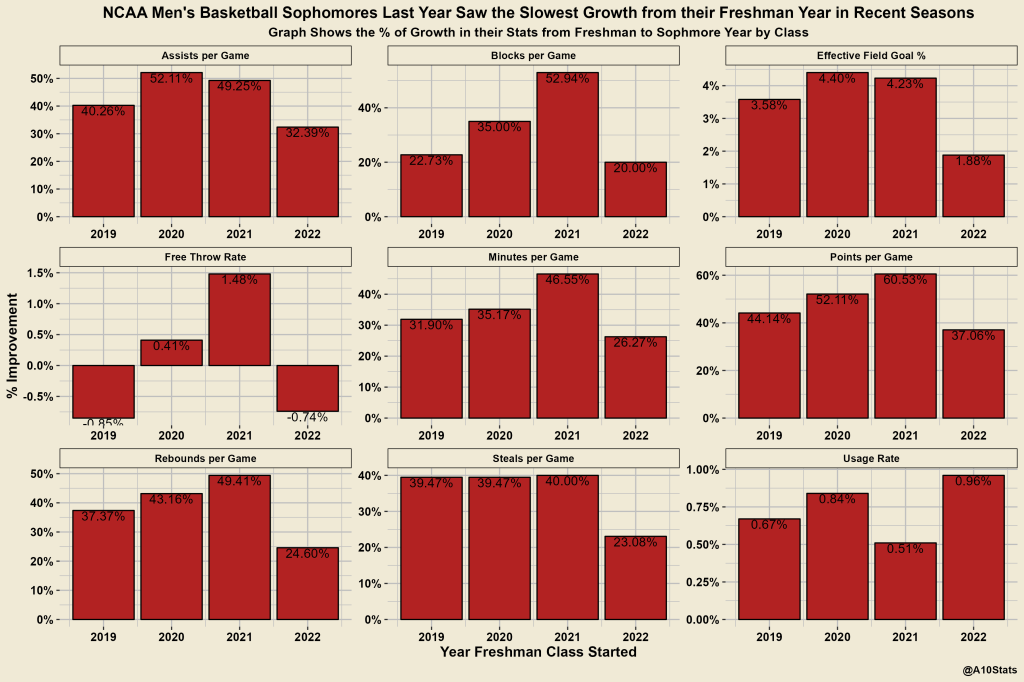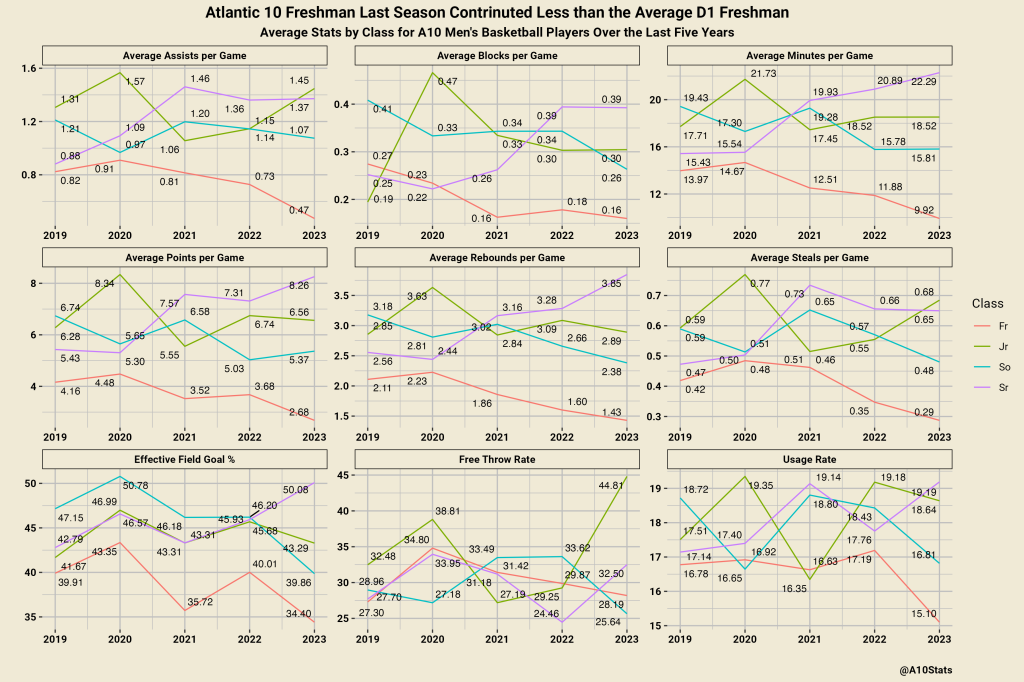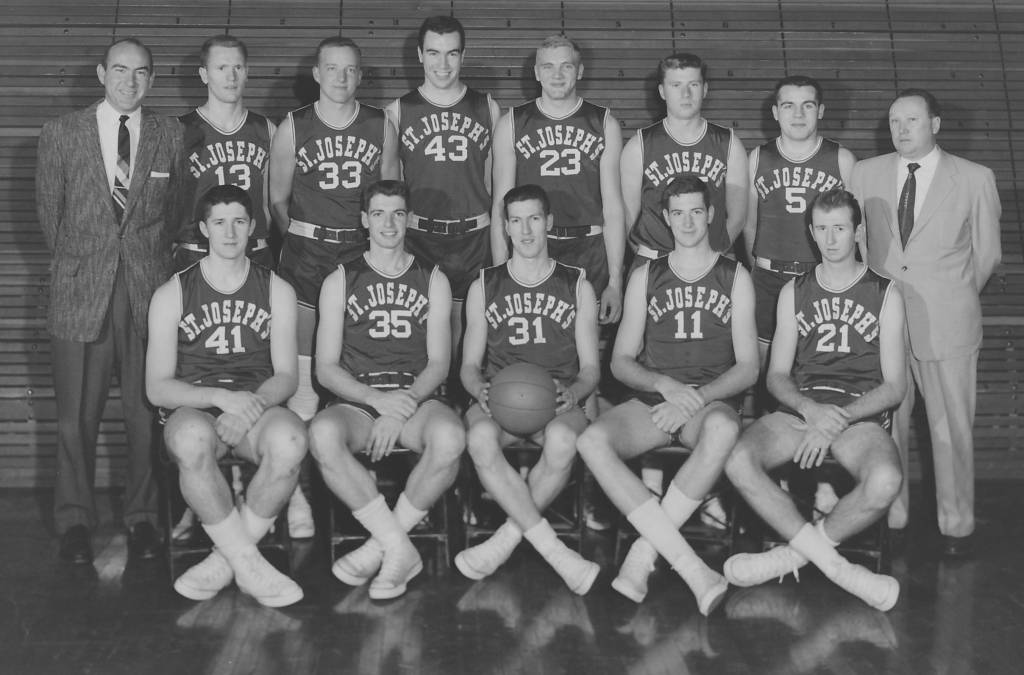On twitter you see fans of different Atlantic 10 schools create and update graphics that show the scholarship situation for their favorite team each year. I admire the folks who do these, as trying to keep track of who is using a “COVID year”, who has used their one-time transfer, and who did or did not get a waiver from the NCAA for their second transfer is yeoman’s work. These changes to NCAA basketball compared to even 3 or 4 years ago drastically reshaped roster construction and the college game we know today.
The ability for coaches to drastically reshape their roster with experienced talent if they don’t like what they see at seasons end can quickly turn their fortunes around. A coach can hit the portal and either try and bring in a player who put up gaudy numbers at a low major or try to bring out the talent of a player who found himself on the bench without playing time at a high major. Hell, they could even take players from a conference or local rival with the one-time transfer rule and the elimination of rules requiring inter-conference transfers to sit out. Though there are certainly coaches and programs that still try to build a team in a “traditional” manner by developing players they recruited over the years of their career, many have pivoted to leaning heavily on transfers.
While the extra eligibility of the “COVID Year” is dwindling down, the transfer portal seems to be a force to be reckoned with in college basketball for years to come. The NCAA is starting to indicate it will not just offer a blanket waiver for players looking to transfer schools twice, but a universal waiver for a one-time transfer is here to stay. This will continue to offer coaches and programs quick fixes for their roster, but beyond that short-term flexibility, what impact has the roster flexibility that college basketball has enjoyed had on the players and their development specifically?
The most glaring impact these roster rules have had is on the role that freshmen typically plays on their teams. Even with the COVID year making the definitions of these classes nebulous, if we compare the average minutes per game freshmen played last season to what they did the year before COVID shut March Madness down, freshmen played 14.19% less minutes per game or 1.8 minutes less. Over the course of a 32-game season, that means Freshmen in Division 1 last season got roughly a game and half less of playing time experience than their counterparts did four seasons ago.

Not only are freshmen playing less, but they are also having less of an impact on the court when they do play. Last season points, rebounds, assists, steals, and blocks per game for freshmen were at their lowest of any season in the past five years. Freshmen also had their lowest usage rate of any time in the past five years, were the second least efficient scoring in those seasons putting up the second lowest effective field goal percentage and went to the free throw line less putting up the smallest free throw rate in recent seasons.

We can also quantify this with the number of impact freshmen we see become stars in their first season of college basketball. It’s not the easiest thing to quantify star power, but for our purposes here we can count the number of freshmen in the top 50 of Bart Torvik’s PORPAGATU! (or Points Over Replacement Per Adjusted Game at That Usage! for the uninitiated). 2019 saw the most freshmen in the PORPAGATU! top 50 in the last five seasons with 4. 2020 and 2021 saw 3 freshmen in the top 50. 2022 saw a reduction of stars with 2 freshmen in the top 50. Finally in 2023, we saw only one freshman player among the top 50 in Bart’s Points Over Replacement stat. Like our traditional counting and efficiency stats, the number of the leaders by class in PORPAGATU! also help quantify the lack of impact freshmen in college basketball last season.

So, freshmen are getting less playing time and struggling to do as much with the playing time they get. Given the opportunities available to programs in the portal and the pressure coaches face to win now, this makes sense. However, this could have a long-term impact that coaches and teams might not be considering. Today’s freshmen are tomorrow’s impact transfers. Are the players currently not getting as much playing time and doing less with it going to see their basketball development stunted as their careers continue?
Any answers to that question would be hypothetical at this point, though we can try to offer an educated guess by looking at the class ahead of last year’s freshmen to see how they have reacted to the changing landscape of college basketball. If we compare the improvement seen in their sophomore season by players who started their freshman year season in 2022, we see the jump in their sophomore season stats is less pronounced than other recent classes in their sophomore years.

All three of the classes before the 2022 freshmen class saw a larger jump in minutes, scoring, rebounds, assists, steals, and blocks. Those classes also saw their shooting efficiency improve more as we see in their effective field goal % and mostly got to the free throw line more frequently. So we see the sophomore class last season already saw their basketball development and progress slowed last season based on what we would expect from prior years. With last year’s freshmen class seemingly even more behind the players ahead of them in Division 1 basketball, we can guess that unless something drastic changes, they will continue to not contribute as much as their contemporaries did in the past.
Given this blog is a card-carrying member of the A10 Sickos Committee, the natural next step is to examine how the Atlantic 10 freshman class compared to the rest of basketball last season. Numbers for freshmen across college basketball were lower than most other recent seasons, but freshmen in the Atlantic 10 saw these same averages lower in most instances than the national D1 average.

Freshmen in the A10 averaged over 1 minutes less playing time per game, scored less per game, averaged less for all the other counting stats listed, were used less when they were on the floor, and scored less efficiently than the average D1 freshmen in college basketball. We know freshmen were less involved on the court for their teams as a whole last season, but were A10 freshmen even worse than their peers across the country?
I reached out to a few A10 luminaries like the 3 Bid League Pod guys, Trisitan Freeman, SBUnfurled and Bracket Forecast to get their thoughts on the class last season and there was a general consensus that for a variety of extenuating circumstances, the freshmen in the Atlantic 10 last season seemed a little worse than usual. Given what we have seen recently with less development from freshman to sophomore year for players, will these now sophomores in the A10 still not have a massive impact for their teams this upcoming season or will they buck the trend?
The impact of extra eligibility from COVID and the loosening of transfer portal restrictions has already impacted how college basketball teams are constructed and how much of a contribution freshmen player typically will bring. We even see these changes impacting the development of young players in some cases year to year. What knock on effects will these changes create further down the road? Will the players who mostly played and contributed less as freshmen continue to see slower development in their career than other players have in the past? Will that cause teams to rely on incoming freshmen in future seasons more? Will this lead to less players wanting to transfer? The landscape of college basketball seems poised for more drastic changes. We can track their impact, but with college athletics undergoing fundamental transformations, it is hard to imagine confidently what the future holds.

Leave a comment